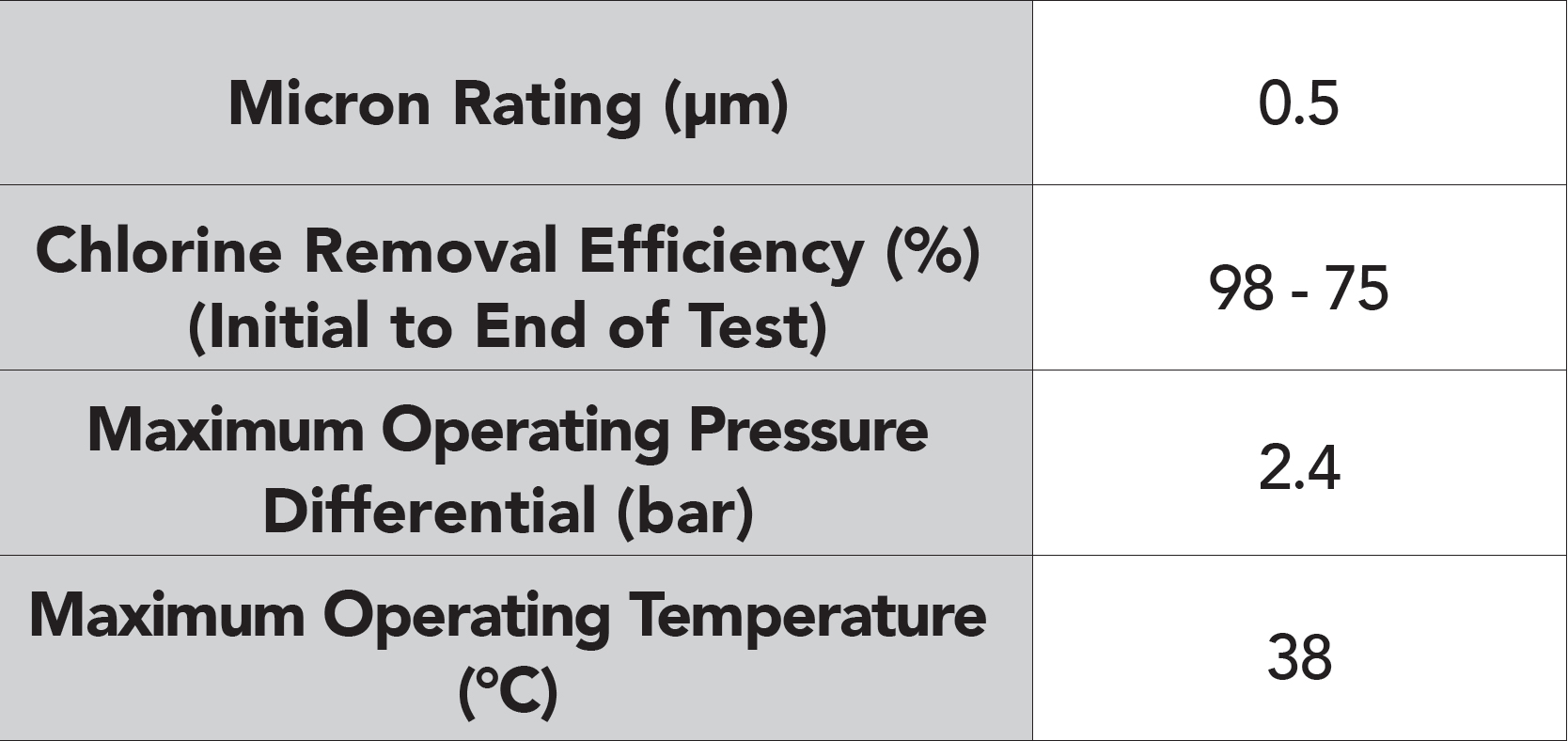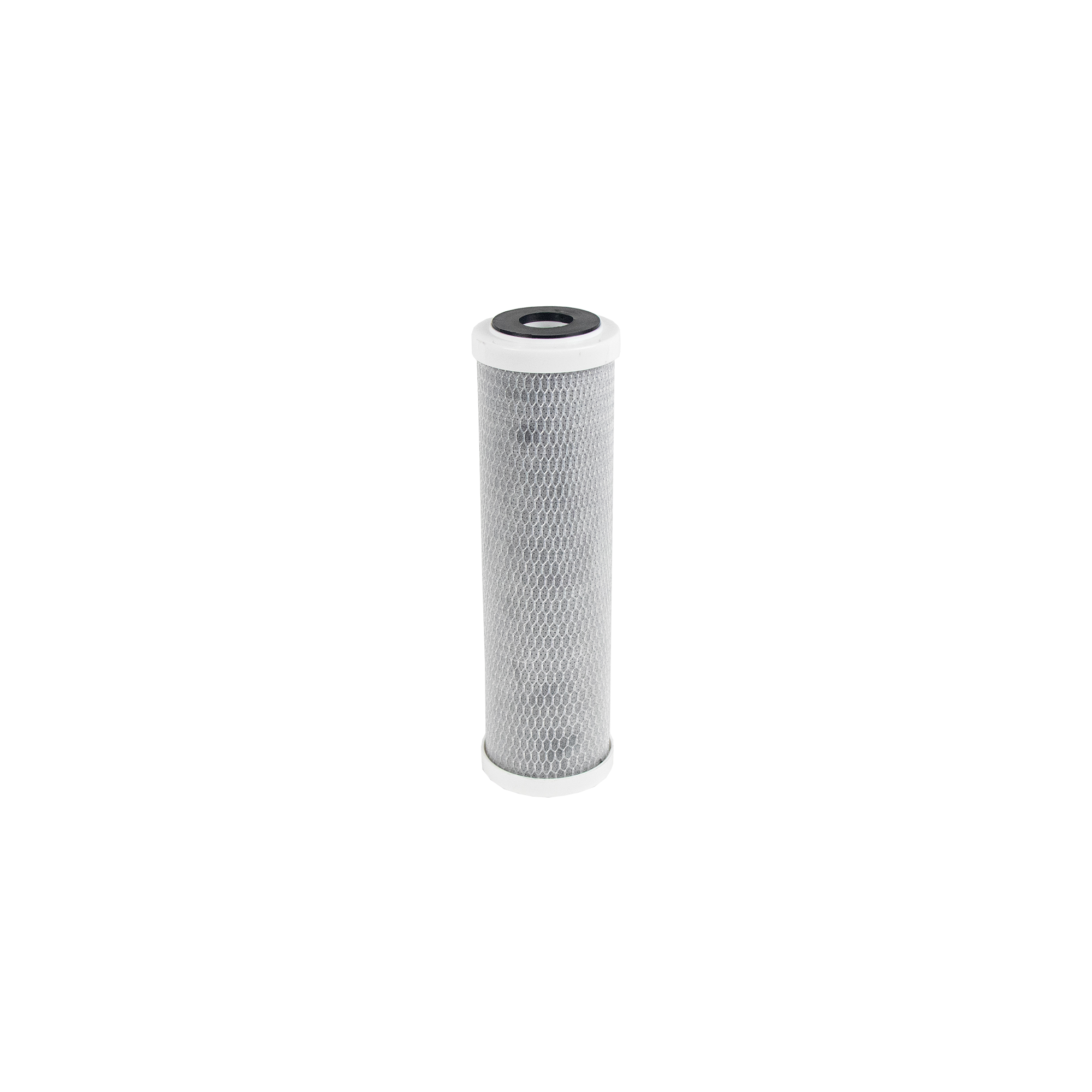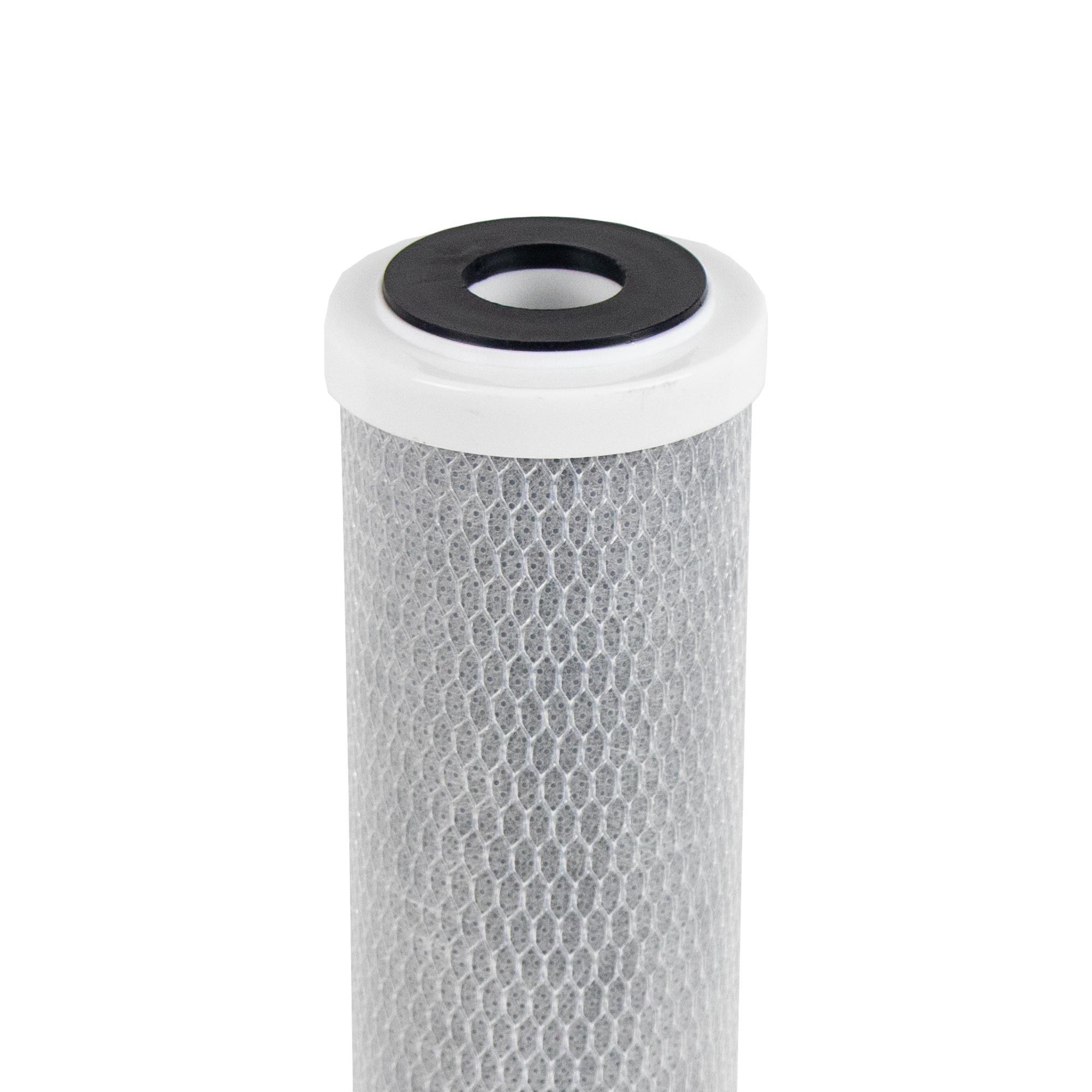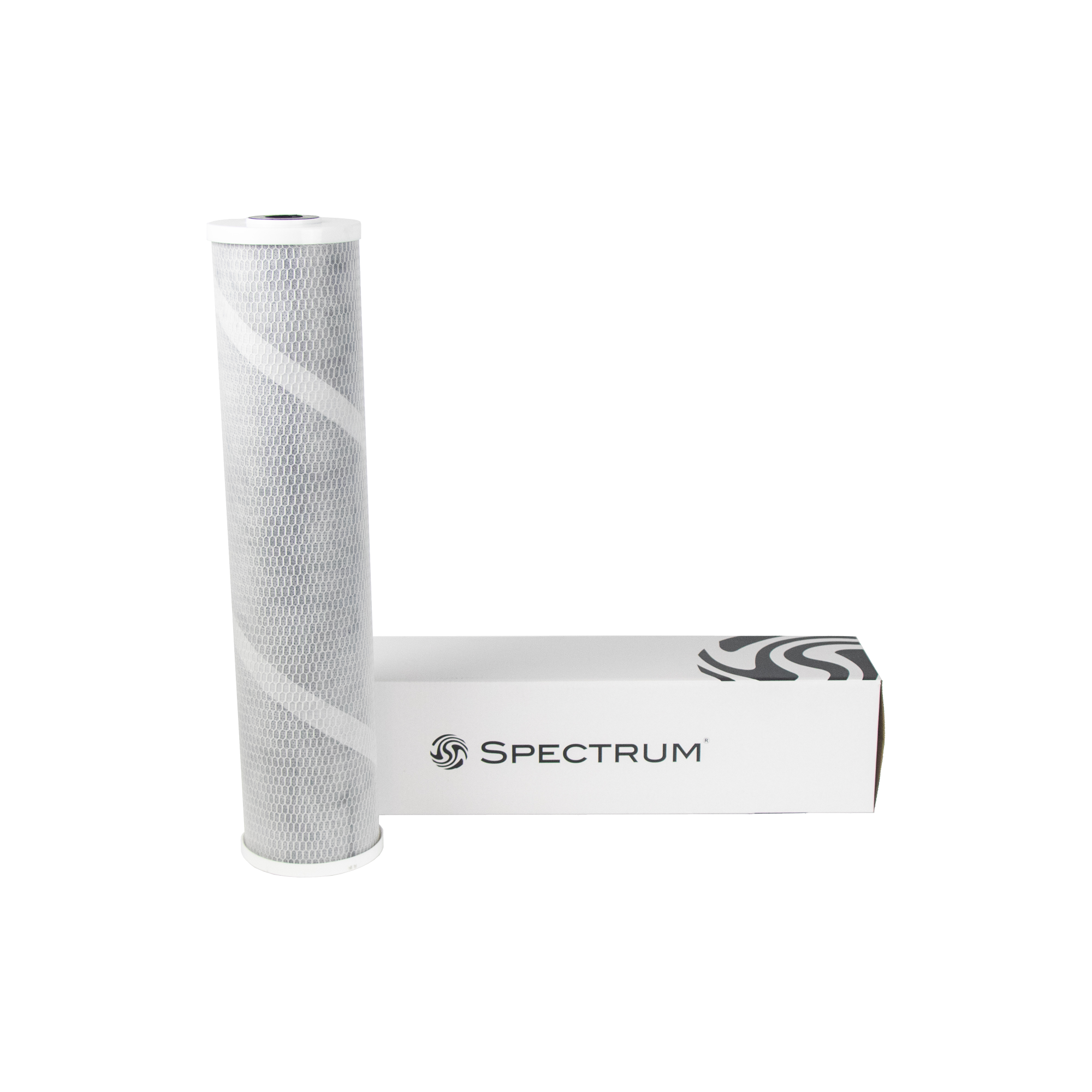FibreOnyx Standard Carbon Filter (SFBC)
- Flow rate and pressure drop equivalent to a 10μm block, while retaining the efficiency of a 0.5μm cartridge
- CTO reduction
- Antimicrobial agent applied to prevent bacteria growth
- Gaskets permanently moulded onto end-caps to prevent dislodging
- Borehole and private water supply
- Designated drinking water outlets
- Cryptosporidium and Giardia protection


Features & Information
The SPECTRUM SFBC builds on the SPECTRUM EFBC with the introduction of cyst removal. Equipped with a higher chlorine capacity than the SPECTRUM EFBC, the SFBC employs new technology to allow greater carbon attachment to fibres, creating the ultimate high-flow carbon cartridges.
FAQs - SFBC
The SPECTRUM SFBC builds upon the SPECTRUM EFBC. It introduces cyst removal capabilities, providing finer filtration down to 0.5-micron to eliminate cysts present in drinking water applications.
Yes, it is recommended to use a 5 micron pre-filtration stage before the SPECTRUM SFBC cartridge. This pre-filtration stage helps remove larger particles and debris, ensuring that the SFBC cartridge operates at maximum performance and capacity.
Refers to the distinctive flavour and smell associated with chlorine in water. Chlorine is commonly used as a disinfectant in water treatment processes to kill bacteria, viruses, and other harmful microorganisms. While chlorine is effective in reducing waterborne pathogens it can leave a residual taste (often described as a bleach-like or chemical flavour) and odour in the treated water.
Removing chlorine from water is often desired for several reason:
- Taste and Odour: chlorine causes an unpleasant taste and odour in water.
- Beverage and Food Quality: natural flavours and characteristics are compromised by the presence of chlorine, specifically yeast.
- Cosmetic and Aesthetics: Chlorine can strip the natural oils from the skin and hair, leading to dryness and potential damage.
- Disinfection Byproducts: Chlorine can react with naturally occurring organic matter in water, forming disinfection byproducts such as trihalomethane and halo-acetic acids. Long-term exposure has been associated with potential health risks, such as cancer.



